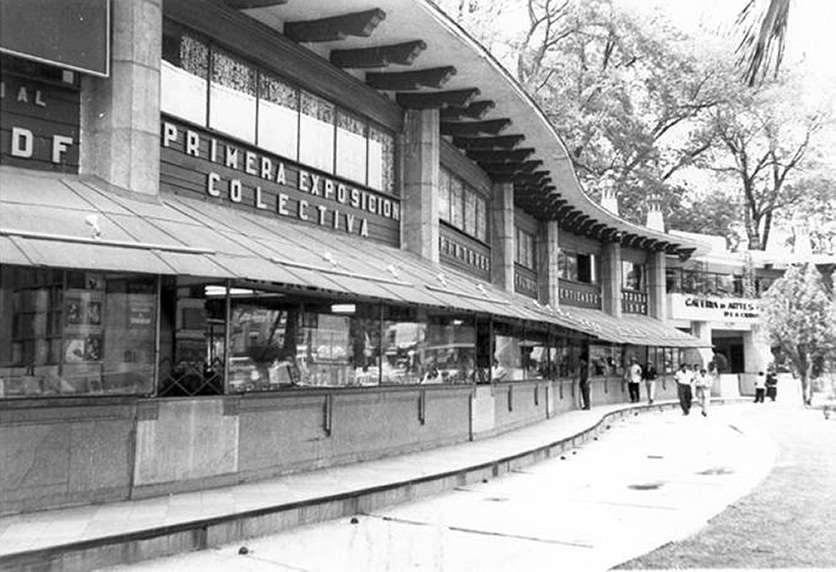A while back, we wrote an article about the contributions made in Venezuela by Basque architects who had been forced to feel the dictatorship the Francoist rebels had imposed by going into exile. We’re bringing up the subject again today, to talk about three Basque architects who were forced to continue their work in exile in Mexico after refusing to give up their beliefs against Franco.
Today, as then, we’re speaking about something the Francoist rebels stole from Basque society: some of its best minds. In the other article, we talked about how some Basques who had fled to Venezuela made huge contributions to their adopted homeland. And today we do the same, but this time in Mexico.
This came about because the MAS Context website has just published an article about these three Basque architects’ contributions in Mexico, their adopted homeland, the country that gave them the opportunity to be able to continue carrying out their work. These three are Tomás Bilbao Hospitalet (Bilbao, 1890-Mexico, 1954), Juan de Madariaga Astigarraga (Bilbao, 1901-1996), and Arturo Sáenz de la Calzada Gorostiza (Labraza, 1907-Mexico, 2003). This article outlines their work, linked together by their participation with other Basque exiles. That is necessary to know in order to appropriately understand their contribution.
This isn’t the first time we bring you an article on Basque topics published by this non-profit organization, created in Illinois in 2009 in order to further the debate about the urban context via the active participation of people from different backgrounds and with different perspectives.
The article was written by Mexican architect Juan Ignacio del Cueto Ruiz-Funes, who has carried out different research projects on the integration of the exiles of the Spanish Republic into Mexican society. This matter was the crux of his doctoral thesis, titled “Arquitectos españoles exiliados en México. Su labor en la España republicana (1931-1939) y su integración en México” (Spanish architects exiled in Mexico: their work in Republican Spain (1931-1939) and their integration into Mexico), which he defended in 1996 at the Polytechnical University of Catalonia. He has not turned his back onto this field, but rather dug even deeper over the years.
His study is a magnificent example of one of the many, the innumerable fields where Francoism was disastrous for Basque society, and indeed Spanish society. The Americas were filled with intelligent, energetic, committed people among the hundreds of thousands of exiles who had to abandon their homeland to take refuge in the New World.
Mexico is a country that welcomed those exiles fleeing the insurgents with open arms. And it is therefore also one of the countries to most benefit from that arrival of intellectuals, professionals, workers, all of whom contributed to the development of the land that took them in. Today, we must remember, and be grateful, to Mexico for not renewing its diplomatic relations with Spain until after Dictator Franco had died.
Juan Ignacio del Cueto Ruiz-Funes, in his article, shows us what these Basque architects contributed to Mexico, which makes us happy. But it also serves to remind us, lest we forget, of everything Franco robbed us of during his criminal rebellion and dictatorship.
We’ll leave you with the article published by MAS Context this September, and another article by the same author, published in 2008 by RIEV de Eusko Ikaskuntza, discussing the same topic, including Basque-Mexican architect Imanol Ordorika (Lekeitio, 1931-México, 1988) and art critic Juan de la Encina (Bilbao, 1881-Mexico, 1963), alongside the three abovementioned architects.
MAS Context – 9/2020 – USA
Contributions of the Basque Exile to Mexican Architecture
The tragedy suffered by the Basque town of Gernika on April 26, 1937 under the bombing of the Nazi aviation was captured in a painting that would become an icon of the twentieth century art world. Its author was able to capture in 26 square meters all the horror that the Spanish society suffered during its Civil War (1936-1939). Guernica by Picasso is world renown, but not many know that it was created at the request of the Republican Government to be exhibited at the Spanish Pavilion in the 1937 International Exposition of Art and Technology in Modern Life held in Paris. That ephemeral building was one of the best examples of the short but productive period of modern Spanish architecture during the Second Republic (1931-1939).
(Sigue) (Automatic translation)
RIEV – 2008 -Euskadi
PRESENCIA DEL EXILIO VASCO EN LA ARQUITECTURA MEXICANA
Este artículo aborda la trayectoria de tres arquitectos vascos que vivieron exiliados en México: Tomás Bilbao (Bilbao, 1890-México, 1954), Juan de Madariaga (Bilbao, 1901-Bilbao,1996) y Arturo Sáenz de la Calzada (Álava, 1907-México, 2003), así como del arquitecto vasco-mexicano Imanol Ordorika (Lekeitio, 1931-México, 1988) y del crítico de arte Juan de la Encina( Bilbao, 1881-México, 1963).
(Follow)
Here’s the PDF of the article
Header phots: Arturo Sáenz de la Calzada. Librería de Cristal in the canopies of the Palacio de Bellas Artes, Mexico City, 1940. © Saénz de la Calzada Aguado family Archive. Courtesy of Juan Ignacio del Cueto Ruiz-Funes.
Last Updated on Dec 20, 2020 by About Basque Country





























